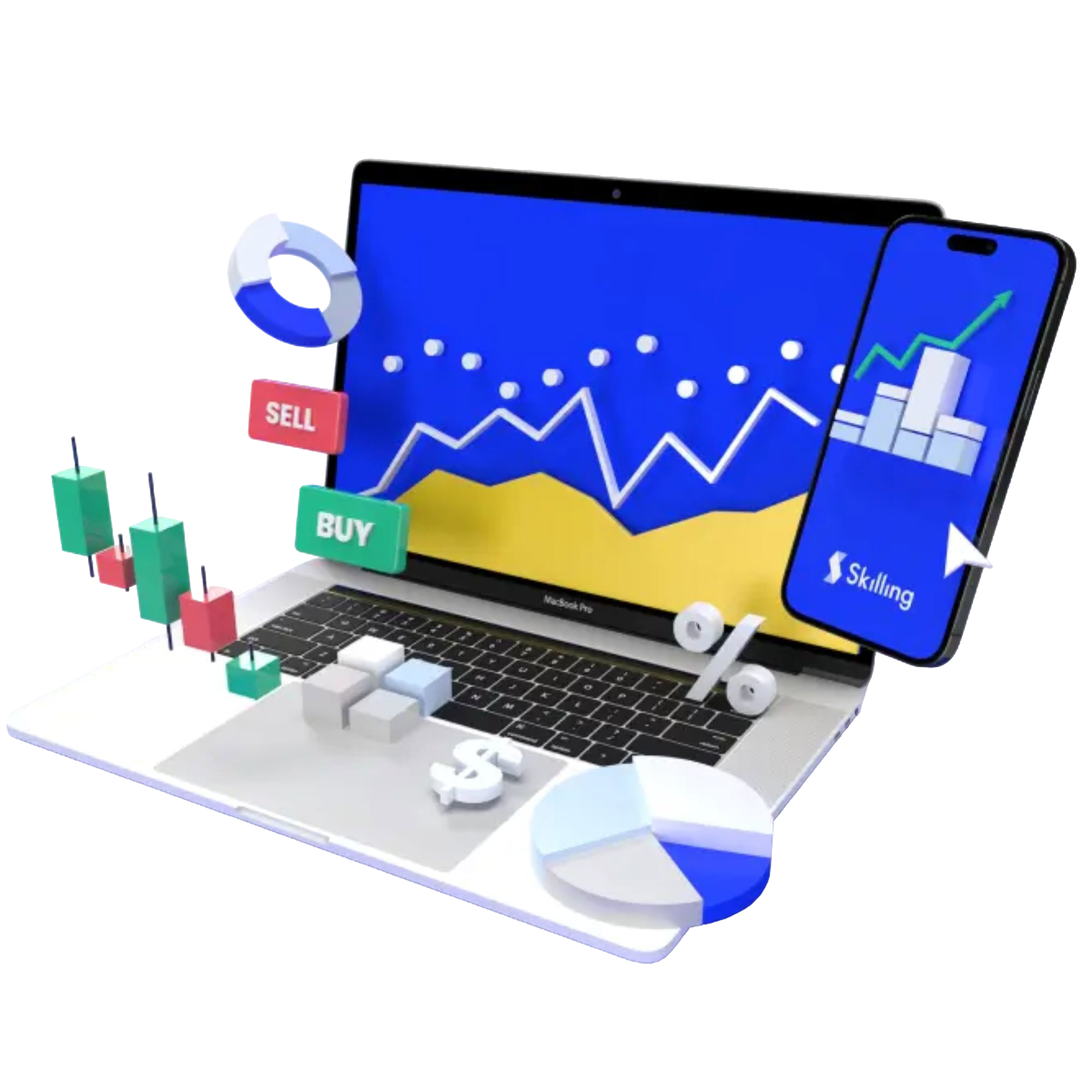In the financial world, the concept of compound interest is often hailed as the eighth wonder of the world. It's the cornerstone of wealth building, turning modest savings into substantial nest eggs over time. This article delves into the essence of compound interest, the factors influencing its effectiveness, and how to calculate it. By understanding both its advantages and limitations, you can make informed decisions about your investments and savings strategies.
Practice with a Demo Account
Try our demo account and experience real market conditions.

What is compound interest?
Compound interest is the interest on a deposit or loan calculated based on both the initial principal and the accumulated interest from previous periods. Unlike simple interest, which is calculated solely on the principal amount, compound interest allows your investment to grow at an accelerated rate over time, as the interest earned in each period adds to the principal, generating further interest in subsequent periods.
This financial mechanism can transform modest savings into significant sums, making it a cornerstone of strategic investment and wealth accumulation. Here’s an example:
Imagine you invest $10,000 in a savings account with an annual interest rate of 5%, compounded annually. Here's how compound interest would work over five years:
- Year 1: You start with $10,000. The interest for the year is 5% of $10,000, which is $500. So, by the end of the year, you have $10,500.
- Year 2: Your new principal is $10,500. The interest for the year is 5% of $10,500, which is $525. So, by the end of the year, you have $11,025.
- Year 3: Your new principal is $11,025. The interest for the year is 5% of $11,025, which is $551.25. So, by the end of the year, you have $11,576.25.
- Year 4: Your new principal is $11,576.25. The interest for the year is 5% of $11,576.25, which is $578.81. So, by the end of the year, you have $12,155.06.
- Year 5: Your new principal is $12,155.06. The interest for the year is 5% of $12,155.06, which is $607.75. So, by the end of the year, you have $12,762.81.
This example demonstrates how compound interest leads to exponential growth of your investment. Each year, you earn interest not only on your original principal but also on the accumulated interest from previous years. Over time, this effect can significantly increase the value of your investment, showcasing the power of compound interest as a tool for financial growth.
How to calculate compound interest
Calculating compound interest involves understanding the formula:

Where:
- A is the amount of money accumulated after n years, including interest
- P is the principal amount (initial investment)
- r is the annual interest rate (decimal)
- n is the number of times that interest is compounded per year
- t is the time the money is invested or borrowed for, in years
Pros and cons of compound interest
While compound interest is celebrated for its potential to grow savings significantly over time, it's also subject to a nuanced balance of benefits and drawbacks.
| Pros | Cons |
|---|---|
| Accelerated growth: Your money grows exponentially over time, thanks to the reinvestment of interest. | Debt risk: When applied to loans, it can significantly increase the amount owed. |
| Motivation to save: The potential for high returns encourages more substantial and earlier investments. | Rate fluctuations: Interest rates can vary, affecting the predictability of investment growth. |
| Flexible compounding: Investors can choose the compounding frequency that best suits their goals. | Access to funds: Early withdrawal may result in losing potential interest earnings. |
Understanding compound interest is essential for anyone looking to make the most of their savings and investments. By leveraging this powerful financial principle, you can significantly enhance your financial well-being over time.
Whether you're saving for retirement, education, or any other long-term goal, mastering compound interest can be your key to achieving financial success.
FAQs
1. Can compound interest work on any type of investment?
Compound interest can apply to a wide range of investments, including savings accounts, bonds, and certain types of stocks. However, the rate of return and compounding frequency can vary by investment type.
2. How often should interest be compounded for the best growth?
Generally, the more frequent interest is compounded, the more your investment will grow. However, this depends on your specific financial goals and investment strategy.
3. Is it better to have a higher interest rate or more frequent compounding?
While both factors are important, a higher interest rate typically has a more significant impact on the growth of your investment compared to the frequency of compounding.
4. Can I lose money with compound interest?
The principle of compound interest itself aims to grow wealth over time. However, if applied to loans or investments with high volatility or poor performance, it's possible to face financial loss.











